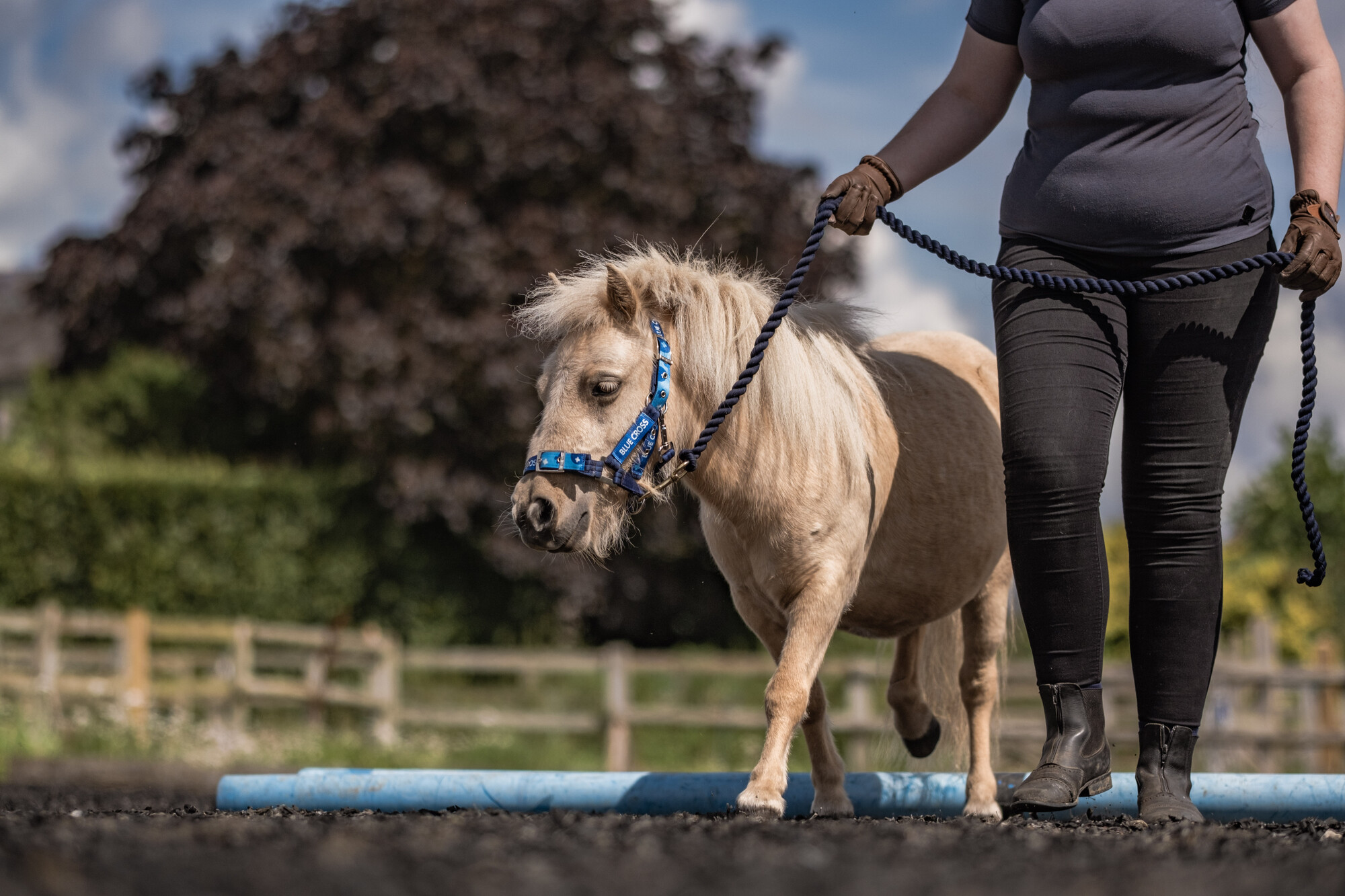
How to start training your horse
Before you start training your horse, it’s useful to understand how they learn and what they need to be healthy and happy.
How is training useful?
Training your horse is important for communication and building your bond. But it can also help to make day to day situations safer. Your horse should be good to handle and lead, and should stand still for vet and farrier appointments. They should also stand patiently while you're grooming and tacking up.
Training your horse can also help when introducing them to new or worrying situations. When your horse has trust in you and you’re able to break down a scary experience (such as loading into a trailer for the first time) into smaller steps, you can make it a more positive experience.
What does your horse need before you start training?
Before you begin training it’s important that your horse is happy and healthy. Their needs today are very similar to those when they were living in the wild, so you’ll need to help them live as naturally as possible. This includes:
- being fed a suitable diet
- having as much turnout as possible
- socialising with other horses
- opportunities to exercise
- different types of enrichment (such as enriched grazing systems)
If your horse’s basic needs are not met and they cannot exhibit normal behaviours, this will impact their ability to understand what you’re asking and may cause stress during training sessions. They may even begin to associate training with negative experiences.
For example, since horses are very social animals, some may find it stressful to be apart from their friends, even for a short time. Instead of separating your horse for a training session, you can carry out your training session in pairs or near to their companions. By fulfilling your horse’s needs before you begin training, you’ll set yourself up for a successful learning session.
More on horse’s needs and behaviour
How do horses learn?
Operant conditioning
Operant conditioning is where horses learn by trial and error, and assessing whether there is a positive or negative outcome. Horses learn that when they carry out an action, something else happens. If this result is positive, they will be more likely to want to try the action again.
Operant conditioning comes in four forms – positive reinforcement, negative reinforcement, positive punishment and negative punishment. Positive and negative punishment methods are often considered to be unhelpful ways of training horses.
At Blue Cross, we focus on the following two forms of operant conditioning:
Positive reinforcement
Positive reinforcement is when a horse is given something they enjoy immediately after a desired behaviour has been shown – such as giving them a scratch on the withers or a food reward – to encourage a behaviour to happen again. For example, you can use positive reinforcement whenever your horse stands still at the mounting block by giving them a scratch. The addition of an experience they enjoy rewards them when they have completed the desired behaviour.
Negative reinforcement
Negative reinforcement is when you remove something your horse dislikes to encourage a behaviour to happen again. For example, when leading your horse, you may apply pressure to the lead rope to ask your horse to halt and release the pressure when they have halted. The pressure motivates your horse to respond to what you’re asking, and the release of pressure trains the desired behaviour.
If your horse is not responding right away, it’s important to maintain the pressure rather than increase it. You’ll need to ensure you release the pressure only when your horse has shown the behaviour you want to train. Releasing at the wrong time can reward behaviour you are not asking for.
Training a behaviour using negative reinforcement should be repeated a few times to help your horse remember the desired response.
Tip
Positive and negative reinforcement can be used in combination. For example, once your horse has responded to leg pressure, immediately release the pressure and give them a scratch on the withers.
Classical conditioning
Classical conditioning is where horses learn to associate one event with another.
For example, your horse may link that when you pick up their feed bowl or go into the feed room, they are about to be fed. They may then bang their door in anticipation of being fed. If you then give them their feed after they bang on their door, they have operantly conditioned themselves that this will happen every time. On the other hand, if you wait until they have stopped door banging before you give them their feed, they will learn that they are only fed when they are quiet.
You can also use this associative learning to teach your horse that a ‘click’ or ‘yes’ means they are being rewarded for an action or behaviour. Clicker training – whether you are using a clicker or your voice – is a useful way to help your horse link the desired behaviour with the reward.
Training your horse
1. Set your goal
Before you start training your horse, it’s important to have a clear end goal in mind. This will help you break down training into smaller steps across several sessions. By focusing on one goal, you’ll also help your horse to learn what you’re asking without getting confused.
2. Practice little and often
Horses have a short attention span, so it’s a good idea to keep training sessions short. This will help to prevent your horse from becoming bored or frustrated. Keep sessions to no longer than 10 minutes and practice training little and often over days or weeks.
Pay attention to your horse’s body language when training – if your horse is moving away from you or showing signs of stress, stop the training session immediately. Your horse should be able to choose when they engage in training.
3. Be clear on timing
The timing of the reward is an important part of helping your horse understand what you’re asking for. Whether you’re using positive or negative reinforcement, the reward should be given within three seconds of your horse displaying the desired behaviour. For example, when your horse responds to your leg pressure while riding, remove the pressure immediately. Or, when your horse targets an object with their nose, give them a scratch as soon as they touch the object.
Your horse should always be consistently rewarded when they achieve the desired behaviour. This will help them to build their trust in you and understand what you’re asking of them.
4. Go back a step if needed
Training should be broken down into smaller steps, so you can go back a step if your horse is struggling to understand what you’re asking. Repeat the step as often as necessary until your horse is confident doing what you ask. It’s a good idea to revisit the training regularly to make sure your horse is still familiar with it.
Page details
Reviewed
• 27 March 2024
Next review
• 26 March 2027






